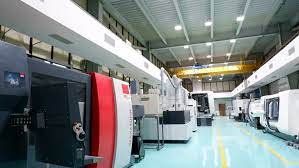Integrated Cryogenic Engine Manufacturing Facility (ICMF):

President Droupadi Murmu inaugurated Hindustan Aeronautics Limited’s (HAL) Integrated Cryogenic Engine Manufacturing Facility (ICMF) in Bengaluru.
- The ICMF is dedicated to Rocket Manufacturing and its assembly for ISRO.
- The facility will boost self-reliance in the manufacturing of high-thrust rocket engines.
- On January 5, 2014, India successfully flew GSLV-D5 with a cryogenic engine (made by ISRO through private industries) and became the sixth country in developing cryogenic engines.
- Cryogenics is the study of the production and behavior of materials at extremely low temperatures (below -150 degree centigrade) to lift and place heavier objects in space.
- A cryogenic engine provides more force with each kilogram of cryogenic propellant it uses compared to other propellants, such as solid and liquid propellant rocket engines, and is more efficient.
- Cryogenic engine makes use of Liquid Oxygen (LOX) and Liquid Hydrogen (LH2) as propellants which liquefy at -183 deg C and -253 deg C respectively.
Cryogenic Fuels:
- Fuels that are required to be stored at extremely low temperatures in order to maintain them in a liquid state are Cryogenic Fuels.
- These fuels are used in machinery that operates in space (e.g. rocket ships and satellites) because ordinary fuel cannot be used because of the very low temperatures often encountered in space, and due to the absence of an environment that supports combustion (on Earth, oxygen is abundant in the atmosphere, whereas human-explorable space is a vacuum where oxygen is virtually non-existent). Cryogenic fuels most often constitute liquefied gases such as liquid hydrogen.
- Importance of Cryogenic Technology for India:
- Advancement of the Space Programme
- Lighter weightand cost-effective.
- Clean technology– Cryogenic technology uses Hydrogen and oxygen as fuel and releases water as a by-product.
- Edge over other countriesin modern technology.




